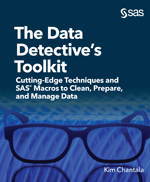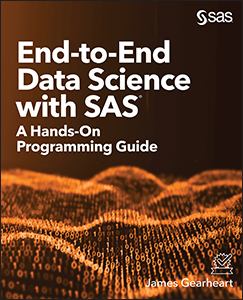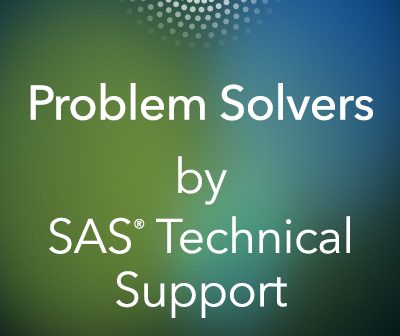
By starting from a set of purely declarative statements, any zebra puzzle with limited constraints can be tagged and solved quickly in the same way without changing any code.

By starting from a set of purely declarative statements, any zebra puzzle with limited constraints can be tagged and solved quickly in the same way without changing any code.

Many SAS programmers use macros. I have seen students in my SAS classes use several methods to activate their macros. One way is to load the macro in the Display manager or editor in SAS OnDemand for Academics and submit it. Another technique is to use the statement %Include macro-name.

Last year, I wrote a blog demonstrating how to use the %Auto_Outliers macro to automatically identify possible data errors. This blog demonstrates a different approach—one that is useful for variables for which you can identify reasonable ranges of values for each variable. For example, you would not expect resting heart

SAS Press author Kim Chantala shows you how to to spend less time preparing data so you can lavish time on analysis.

In my new book, End-to-End Data Science with SAS: A Hands-On Programming Guide, I use the 1.5 IQR rule to adjust multiple variables. This program utilizes a macro that loops through a list of variables to make the necessary adjustments and creates an output data set. One of the most

One of the first and most important steps in analyzing data, whether for descriptive or inferential statistical tasks, is to check for possible errors in your data. In my book, Cody's Data Cleaning Techniques Using SAS, Third Edition, I describe a macro called %Auto_Outliers. This macro allows you to search

Whether you are a strong believer in the power of dividing by zero, agnostic, undecided, a supporter, denier or anything in between and beyond, this blog post will bring all to a common denominator. History of injustice For how many years have you been told that you cannot divide by

The %SYSFUNC macro function allows you to access most SAS® functions. In this blog post, I demonstrate how %SYSFUNC can help in your programming needs when a macro function might not exist. I'll also share the formatting feature that is built in to %SYSFUNC and introduce the %QSYSFUNC that masks the returned value.

The stored compiled macro facility enables you to compile and save your macro definition in a permanent catalog in a library that you specify. The macro is compiled only once. When you call the macro in the current and subsequent SAS® sessions, SAS executes the compiled code from the macro

Have you ever needed to run code based on the client application that you are using? Or have you needed to know the version of SAS® software that you are running and the operating system that you are running it on? This blog post describes a few automatic macro variables